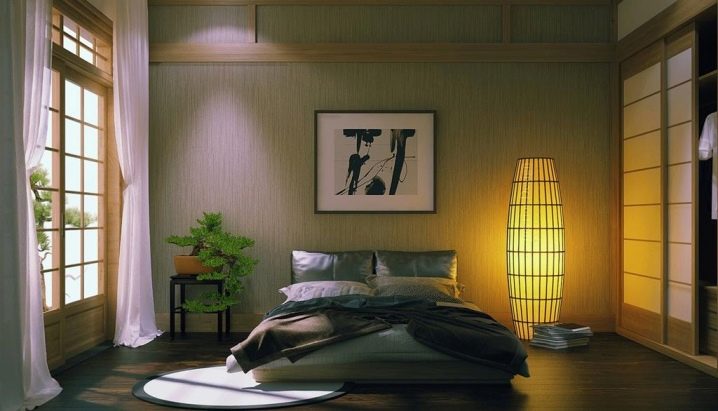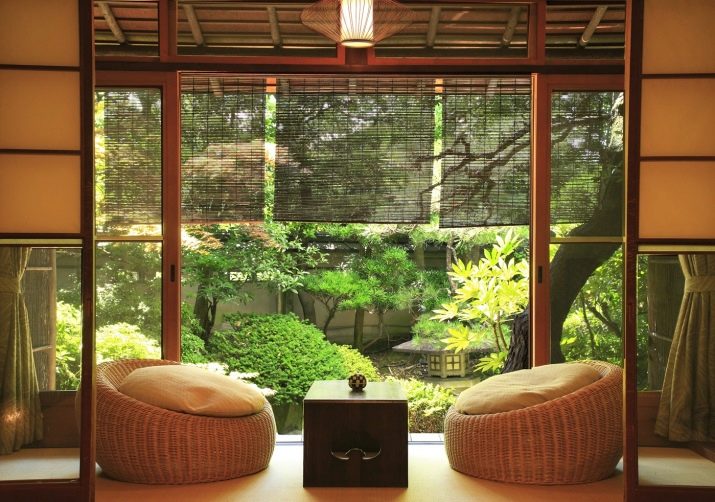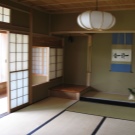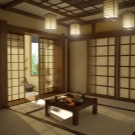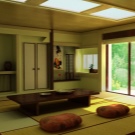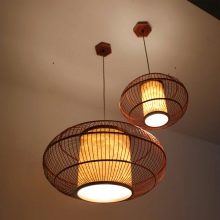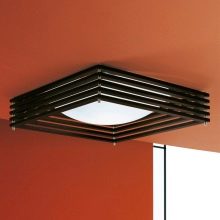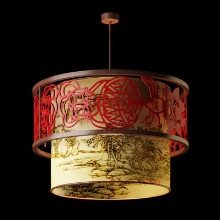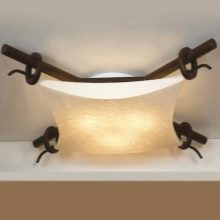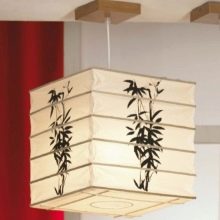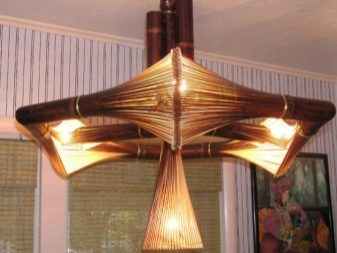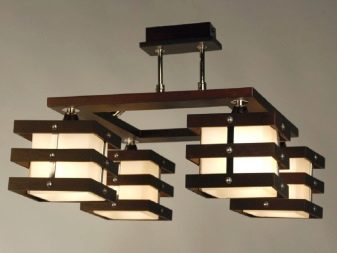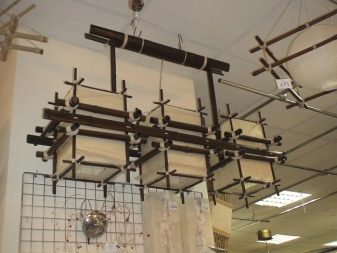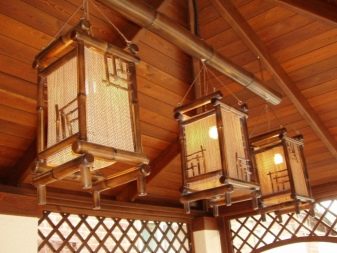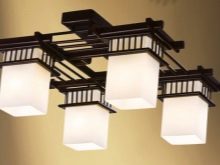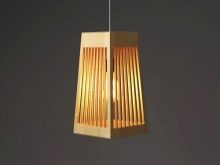Japanese style chandeliers
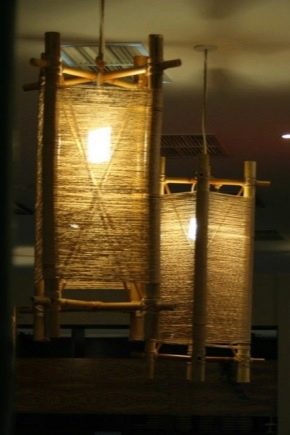
Japanese culture is beautiful, mysterious and completely unique. It attracts and fascinates people of different nationalities, and many people want to see a part of this country in their home. That is why Japanese-style ceiling chandeliers have become so popular. Below we consider in detail the characteristic differences of such lamps, the materials for their manufacture, and also indicate a few rules on the choice of these devices.
Special features
In the Land of the Rising Sun, they do not tolerate pretentiousness, excessive luxury and excessive brightness. This rule is fully expressed in the design of lamps - they should be as simple and functional as possible. That is why Japanese style is always referred to as minimalism.However, this does not mean that the lighting devices look boring and too simple. On the contrary, such a concise and stylish product will be a great addition to the interior of the apartment.
As for the configuration of Japanese ceiling chandeliers, then the manufacturers also strive for maximum simplicity. You will not find fixtures that are complex geometric or other intricate shapes. Most often it is square, spherical or rectangular lighting devices.
The color design of the designs is limited to dull, monochromatic shades. Most often it is white, black, brown and beige. However, some designers do not deny themselves the possibility of using other options.
In most cases there are no patterns or ornaments on the chandeliers. But sometimes manufacturers decorate devices with hieroglyphs or national drawings.
Such models look very beautiful, stylish and original. They will be an important addition to the interior in oriental style.
Basic materials for manufacturing
For the implementation of traditional models of lamps are usually used such materials.
Glass
This is the most common option for making Japanese-style lighting fixtures. Stained glass, mosaics and colored glass are never used.
For these chandeliers suitable glass calm colors, usually white or beige. At the same time the glass is exclusively frosted. This is due to the fact that the Japanese really appreciate the moonlight.
It is the effect of the radiance of this heavenly body that they are trying to achieve with the help of matte lamps.
A variety of glass depends mainly on the cost of the material. For expensive models use first-class elite glass. For more modest options use inexpensive glass, but consistently high quality.
Rice paper
Since the most ancient times, such material was used to create the ceiling. And the Japanese did not handle it. In rare cases, the paper was painted with a discreet painting, which gave the chandelier a special significance.
The light from such a device was obtained warm, muffled, slightly yellowish.
Tree
In most cases, bamboo was used to create hanging chandeliers in the East. This sturdy and very beautiful material has always been present in the design of lamps for many decades.
However, modern manufacturers began to replace bamboo with more affordable and familiar wood species for a given locality. Manufacturers often use an exotic and very beautiful wenge tree or oak.
Linen
Since it is very important for the Japanese that everything was exceptionally natural and of very high quality, linen fabric was often used to create the ceiling lamps. Such material perfectly coped with the task, differed durability and environmental friendliness.
Despite the fact that in modern production plastic is used for most different products, it has absolutely no effect on the Japanese-style chandeliers. It is almost impossible to find a similar lamp, which would be made of cheap plastic elements.
Selection rules
Chandelier in the Japanese style will be a real decoration of any room. It will perfectly complement the interior of the kitchen, living room, bedroom or hallway. High-quality lighting device will serve you for many years. But all this is only on the condition that you choose a real Japanese lamp, and not a cheap fake. Below we provide some simple but effective tips to help you distinguish a high-class fixture:
- Pay attention to the price. Modern man is very accustomed to great discounts and sales. Of course, many shops of high-quality Japanese chandeliers often provide customers with certain bonuses. However, it should be remembered that the cost of the lamp is too low - a reason to be alerted. If the seller offers you a product priced at just over one thousand, then it is very unlikely that it is made of high-quality natural materials.
Most likely, it will be a cheap plastic fake, which will not match the withered qualities and will very quickly become unusable. Therefore, be extremely careful, wanting to save.
- Rate design. As mentioned above, the chandeliers in the Japanese style are distinguished by minimalism and high quality materials. At the same time the real lamp is never motley. If the number of shades in its design exceeds three or four colors, then most likely, in front of you is not the best model.
- Ask the seller for product certificates. Quality product certainly has the appropriate certificate. Do not forget to check with the supplier of the availability of these documents.If the goods are in order, then you will be provided with all the necessary papers. And then you will be sure that you get a good chandelier.
These recommendations will help you quickly and easily find a first-class Japanese-style chandelier, which will become a real decoration of your home.
See in the next video how to make an original lamp with your own hands that will perfectly complement the Japanese interior.
